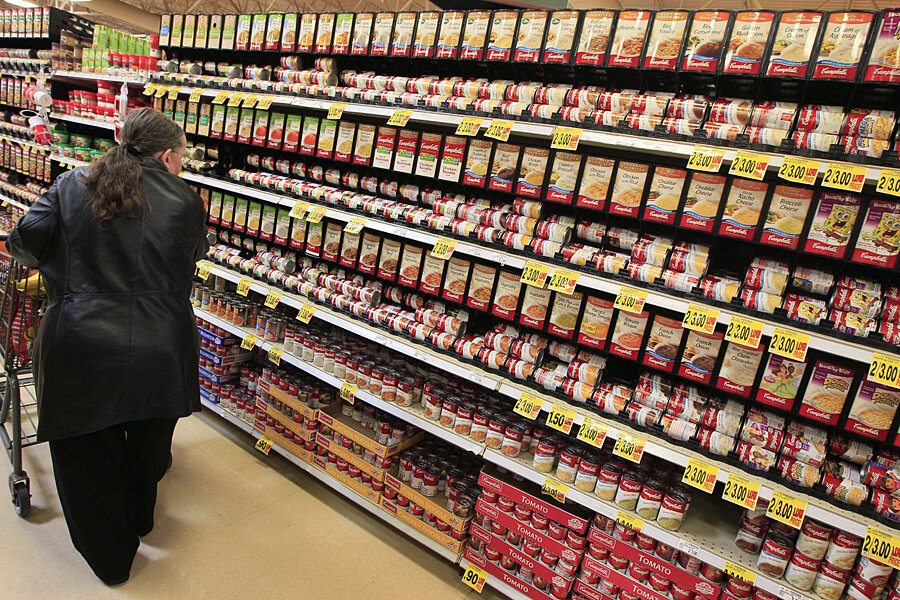Will a multi-part plan help reduce food waste?
Loading...
Preventing food waste is a global issue of epic proportions. Americans alone are guilty of throwing away 1,400 calories of food per person each day—wasting not only nutrients, but money as well. As part of the Think.Eat.Save campaign, the UN Environment Programme (UNEP) has released a new tool for reducing and preventing food loss and waste.
Food loss refers to those products that never make it to market—and often never leave the farm or storage facility—because of bruising, spoiling, wilting, or being otherwise damaged before reaching consumers. Food waste indicates that the product has reached its final consumer in good condition but was thrown away, before or after spoiling.
Think.Eat.Save Guidance Version 1.0 presents a four-part approach for governments, businesses, and other local organizations to implement food saving strategies at various stages of the supply chain. The Guidance focuses on identifying large scale—regional and country-wide—solutions to the problem of food waste at food retailers, hospitals, hotels, restaurants, and schools.
The Guidance also prioritizes the reduction of household food waste and suggests that a best practice is to make consumers and the food businesses they frequent partners in the fight against food waste.
Creating a shared set of objectives “is a great initiative to get consumers and businesses to think more about the food we throw away. Nobody likes to waste food, so we need to do all we can to make it easier to buy, consume, and throw away only what we absolutely need to,” Luke Upchurch, Head of Communications at Consumers International, acknowledged.
The first module of the Guidance is intended to help national and regional governments identify where (geographically and in what supply chain stage) food waste occurs, in what quantity, and possible causes. This step helps organizers get an accurate sense of the scale of their food waste problem, connect with existing programs already working to mitigate food loss and waste, and set realistic goals.
After articulating concrete goals for mitigating food waste and loss, policy makers can begin to craft meaningful legislation. Module 2 of the Guidance focuses on developing national and regional policies for food waste prevention and uses Japan’s Food Waste Recycling Law as an example of successful legislation. The Japanese law, amended in 2007, requires food businesses to document their waste statistics and set concrete targets for reduction. It also incentivizes businesses to recycle their food waste—for example, into animal feed or fertilizer. By 2010, the Japanese food industry was recycling or reusing 82 percent of the food waste it produced.
While government regulations and incentives can be a good way to eliminate wasteful practices carried out by food business and retailers, traditional legislation may not be the best way to tackle the problem of waste produced by households. The third module of the Guidance outlines a more active, community-level approach, made up of two key elements.
The first is the implementation of a household and consumer engagement campaign, which serves to increase consumer awareness of food waste and showcase the benefits of reduction: less food in the trash means more money in the consumers’ pockets and less methane gas, a harmful greenhouse gas produced by decomposing waste, in the atmosphere.
The second step involves changing the construction and labeling of consumer products to make it easier for consumers to properly dispose, recycle, or reuse them.
The final module of the Guidance calls on food manufacturers, hospitals, hotels, restaurants, schools, and other organizations to integrate food waste prevention and reduction into their corporate strategies. Wasteful practices are expensive practices and companies that prioritize waste prevention and reduction are likely to reap the double benefit of more money and less waste.
For example, in 2011, Unilever Food Solutions launched a waste reduction framework tailored for restaurants in the United Kingdom. Starting with a review of restaurants’ current waste problem, the plan included staff training and education, improved purchasing practices, and amendments to food preparation and quantities based on reviews of how much food of different types customers left on their plates. It was so successful that the framework has been turned into an online program any restaurant business can use to save money and prevent food waste.







